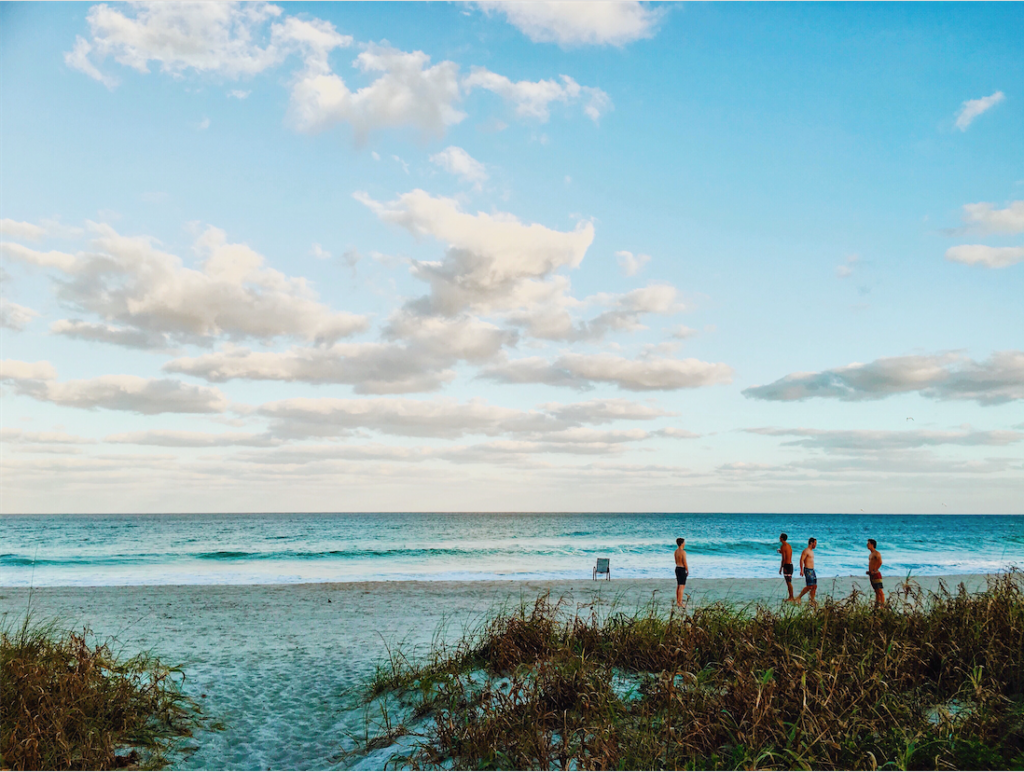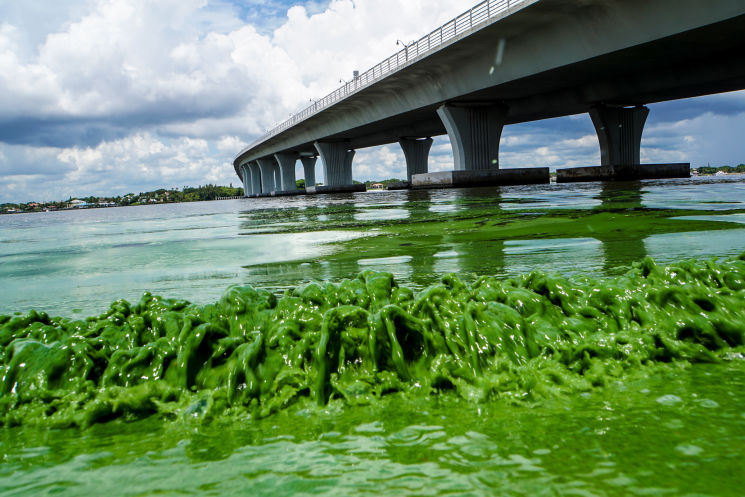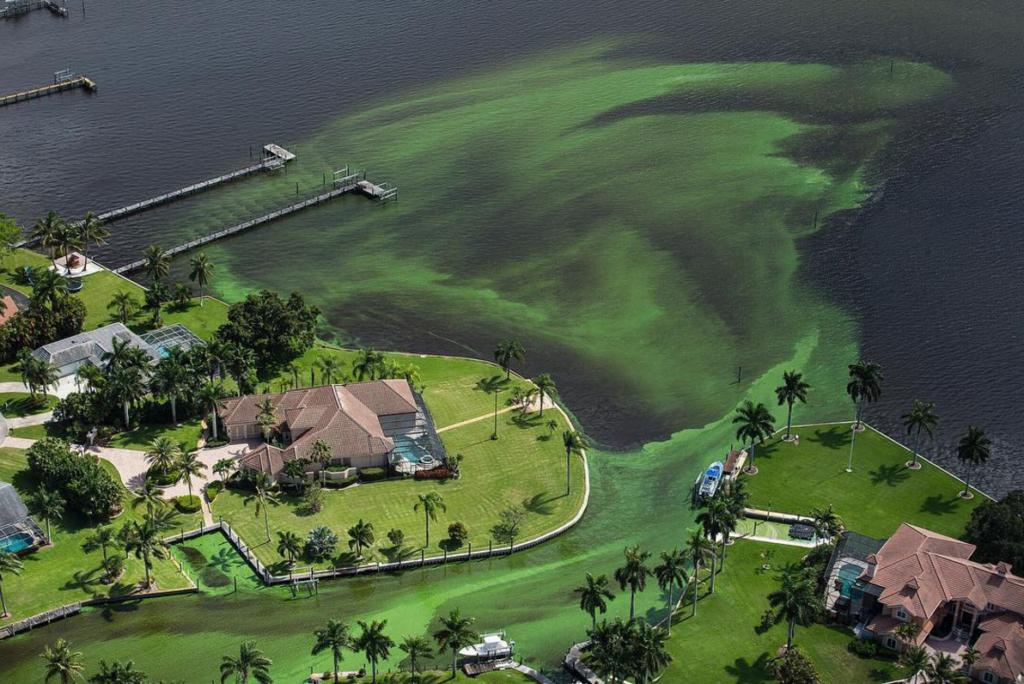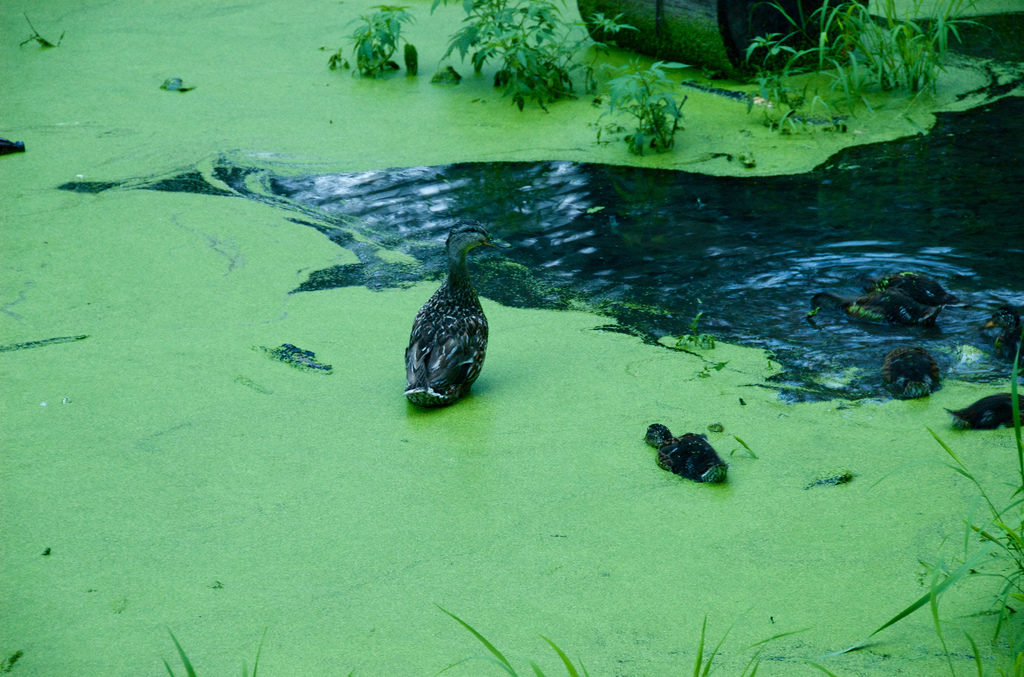In the land of eternal sunshine and good weather, summers are supposed to be spent on the beach basking in the 90-degree sun and laying out on the scorching hot sand. Jumping in the beautiful blue ocean quickly becomes the only method of cooling down.

Photo by Kiel Hollo
And this is normally how us South Floridians spend our summer. However, this summer the reality is just a little different…the beaches seem to have an unwelcome visitor.
A massive blue-green algae bloom has hit four southern Florida counties, blanketing beaches in foul-smelling muck and raising health and environmental concerns. The water is being polluted by what looks like a green icky slime that has been described as “vile”-smelling and “guacamole-thick.”
This green goo has prompted Governor Rick Scott to declare a state of emergency on June 30.

Photo courtesy of tampabay.com
So what exactly caused this? Simply put, the algae bloom is caused by discharge from the polluted Lake Okeechobee.
Lake Okeechobee’s aging dike system has forced U.S Army Corps of Engineers to pump water from Lake Okeechobee into the Caloosahatchee and St. Lucie Rivers in order to avoid flooding in surrounding communities. However, these water discharges, which carry pollutants from agricultural lands (AKA where you get all those yummy Florida crops), pour into rivers and lagoons downstream and eventually get dumped into the ocean.
At this point, too much polluted discharge from Okeechobee has hit areas downstream. You can even see it from space. The blend of fresh and salt water has created giant plumes of algae, making the water unsafe for human and aquatic life.

Photo courtesy of @usatoday on Instagram
So why should you care? The issue with the blooms isn’t just that they are unnapealing and smelly, but that the algae could also be devastating for local economies and ecosystems.
Algae blooms produce toxins that can sicken humans and animals alike, explaining why beaches have started to be closed up and down the coast. In humans, it can cause rashes and lead to nausea, respiratory issues, cramps, diarrhea and vomiting if swallowed. Longer term effects include liver and kidney damage and possible nervous system damage. They also can produce “dead zones” where aquatic organisms die because the water lacks the oxygen they need to survive (bye bye yummy fresh fish you eat at restaurants).

Photo courtesy of flickr.com
The slimy, smelly toxic algae bloom has the ability to adversely affect the fishing industry, the restaurant industry, marine life, and humans health. This issue is affecting where we swim, where we fish, and what we drink.




